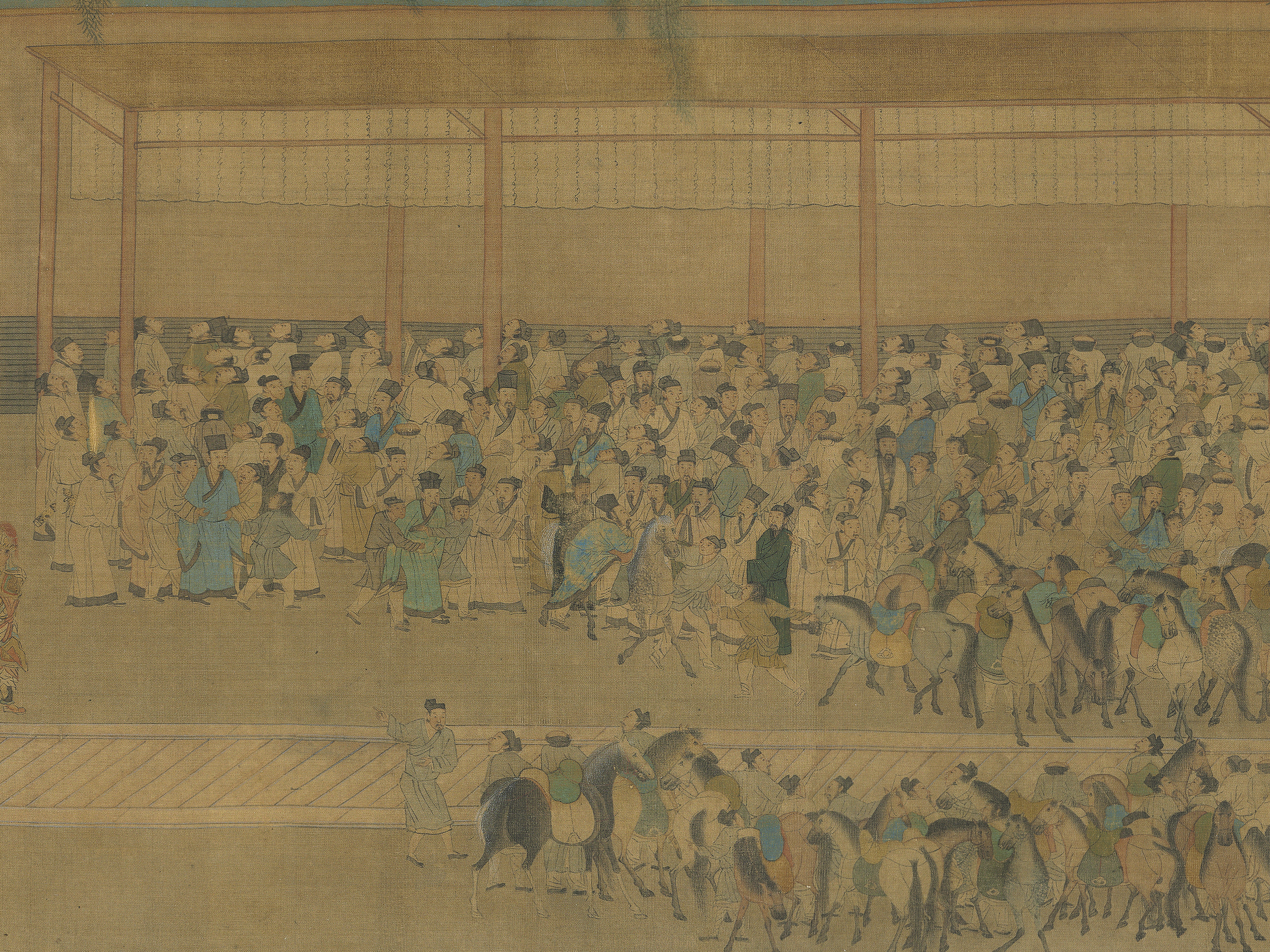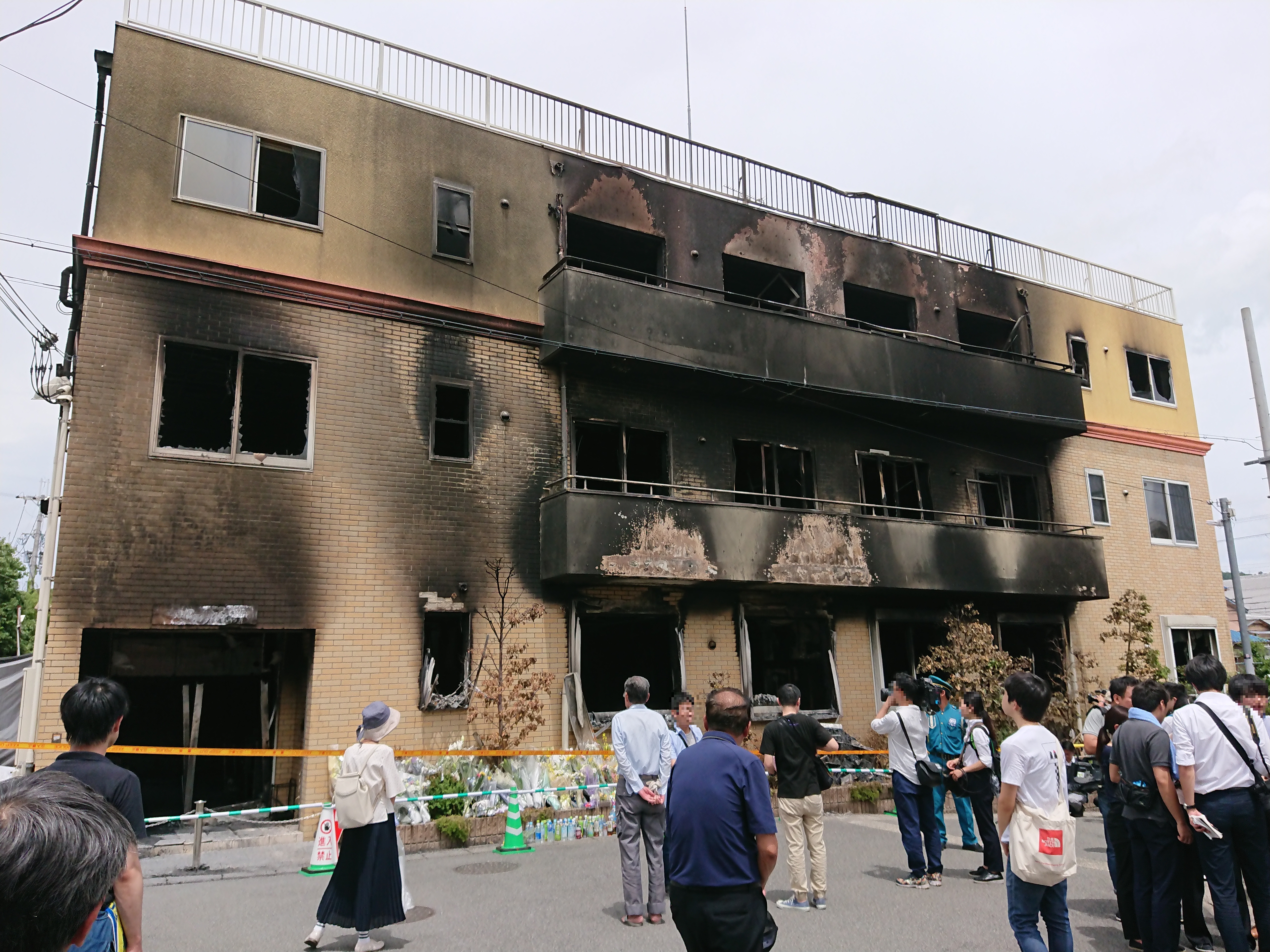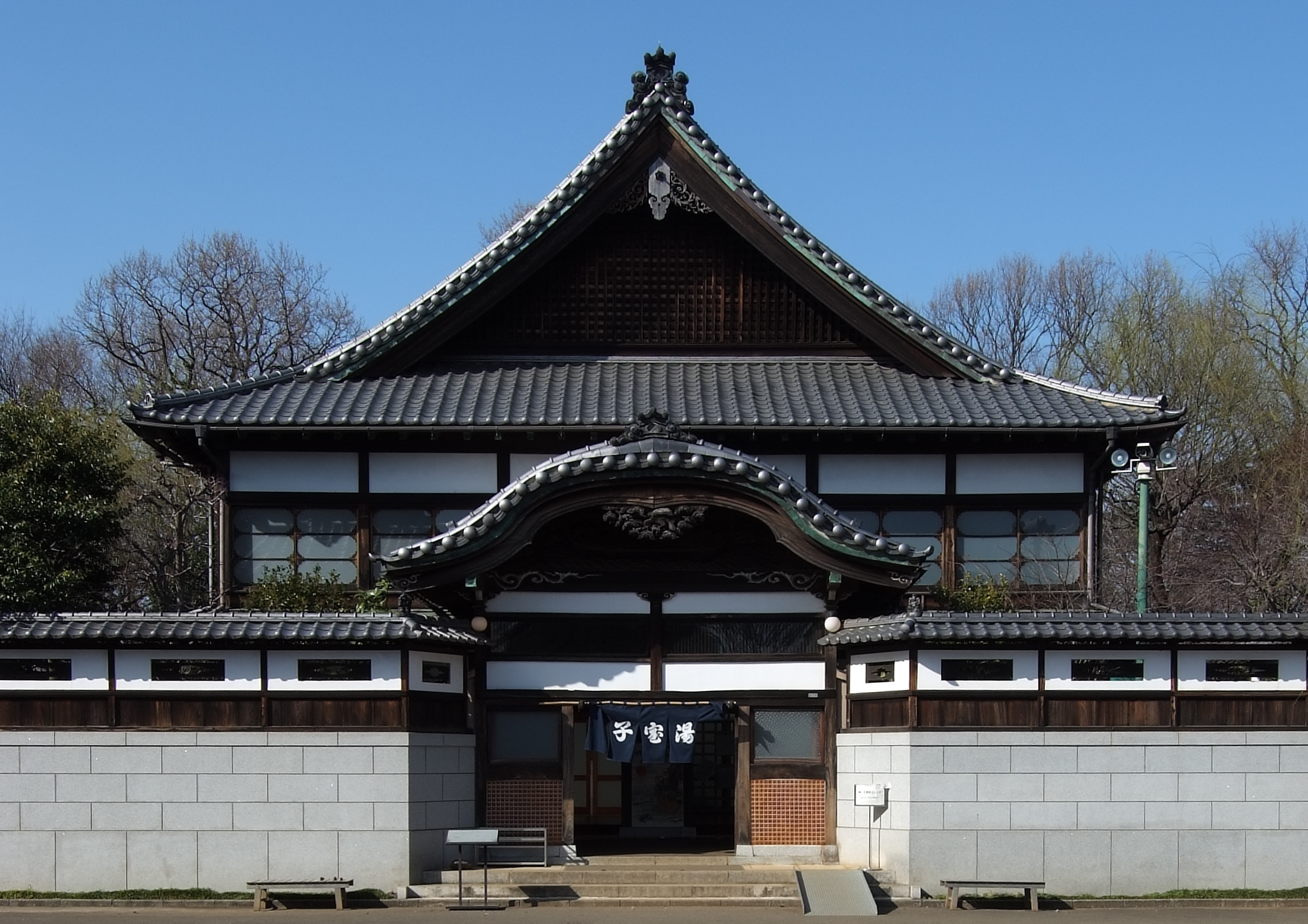|
Hikeshi
Hikeshi () were Fire department, fire brigades in edo period, Edo and Meiji era, Meiji-era Tokyo; also members of these brigades. Japanese cities were extremely prone to fires due to the fact that paper and wood were the main building materials. Firefighters cleared the buildings that stood on the fire's path, preventing it from incinerating nearby buildings. Water extinction was almost never used because of its low efficiency. The first fire brigades were organised by daimyo; but after the Great Fire of Meireki, a city fire service was started. Later, volunteer fire brigades joined the city firefighters. All three types of hikeshi worked simultaneously in intense competition. Background and techniques Fires in Edo (modern Tokyo) and Nagasaki were the most dangerous in Japan. Tokyo's position in the centre of the Kantō Plain makes the buildings fire-hazardous in the winter: the cold and dry Siberian winds facilitated burning while making the residents to keep active fireplaces ... [...More Info...] [...Related Items...] OR: [Wikipedia] [Google] [Baidu] |
Matoi
A was a flag used in Edo period Japan by hikeshi firemen to notify people of a fire near or within a building. It was taken up on a roof near the burning building by the and waved to draw the attention of other groups of firefighters, who would then hurry to the site of the fire to assist. Each different group of firemen in the Edo period had their own to identify themselves.In modern Japan, the is only used for Ceremony, ceremonial purposes, for example on New Year's firefighter event, . The ''Fire Museum'' (消防博物館 東京消防庁消防防災資料センター) of the Tokyo Fire Department has a large collection of replica matoi. References Bibliography Japan Hikeshi (Firemen) Preserving Foundation Flags of Japan Edo period History of firefighting Firefighting in Japan Japanese words and phrases {{Japan-hist-stub ... [...More Info...] [...Related Items...] OR: [Wikipedia] [Google] [Baidu] |
Hikeshi Banten
''Hikeshi banten'' is a reversible hanten coat worn by hikeshi, Japanese firefighters of the Edo period, often decorated with symbolic images. Firefighter brigades consisted either of samurai (''buke hikeshi'') or commoners (''machi hikeshi''). The coats were made of multiple layers of tightly stitched cotton fabric, quilted using the sashiko technique of running stitches. On one side, the coats had only the firefighting brigade name. The other side featured elaborate designs "resist-dyed using the ''tsutsugaki'' method". The inner designs often depicted warrior heroes, or mythical creatures associated with bravery or water, often inspired by ukiyo-e is a genre of Japanese art that flourished from the 17th through 19th centuries. Its artists produced woodblock printing, woodblock prints and Nikuhitsu-ga, paintings of such subjects as female beauties; kabuki actors and sumo wrestlers; scenes ... prints. Fireman's coat (interior), Japan, Late Edo period, 1800-1850 AD, cotton, ... [...More Info...] [...Related Items...] OR: [Wikipedia] [Google] [Baidu] |
Great Fire Of Meireki
The , also known as the Great Furisode Fire, destroyed 60–70% of Edo (now Tokyo), then ''de facto'' capital city of Japan, on 2 March 1657, the third year of the Meireki Era. The fire lasted for three days and, in combination with a severe blizzard that quickly followed, is estimated to have killed over 100,000 people. Legend The fire was said to have been started accidentally by a priest who was cremating an allegedly cursed '' furisode'' kimono that had been owned in succession by three teenage girls who all died before ever being able to wear it. When the garment was being burned, a large gust of wind reportedly fanned the flames, causing the wooden temple to ignite. Historical account The fire began on the eighteenth day of the year, in Edo's Hongō district, and spread quickly through the city, due to hurricane-force winds that were blowing from the northwest. Edo, like all Japanese cities and towns at the time, was built primarily from wood and paper. The buildings ... [...More Info...] [...Related Items...] OR: [Wikipedia] [Google] [Baidu] |
Rendaku
is a pronunciation change seen in some compound words in Japanese. When rendaku occurs, a voiceless consonant (such as ) is replaced with a voiced consonant (such as ) at the start of the second (or later) part of the compound. For example, the morpheme starts with the voiceless consonant when used as an independent word or as the first part of a compound word, but this is replaced with the corresponding voiced consonant in the compound word , from + . Although rendaku is common, it does not occur in all compound words. A rule known as Lyman's law blocks rendaku when the second element already contains a voiced obstruent phoneme (, , , or ). For instance, in , the in remains voiceless because contains . Rendaku is also blocked almost always when the second element of a compound is a recent loan into Japanese. Furthermore, rendaku may fail to occur even in contexts where no definite blocking factor is present. In the Japanese writing system, rendaku affects how a morp ... [...More Info...] [...Related Items...] OR: [Wikipedia] [Google] [Baidu] |
MET DP148993
Met, MET, The Met or The MET may refer to: Buildings Arts venues * Metropolitan Museum of Art, or the Met, in New York City * Manhattan Ensemble Theatre, or MET, in New York City * Metropolitan Opera, or the Met, in New York City * Metropolitan Opera House (other), various buildings * The Met (arts centre) in Bury, Greater Manchester * Manila Metropolitan Theater in Manila, Philippines Sports venues * Met Center in Bloomington, Minnesota * Met Park in Norfolk, Virginia * MetLife Stadium in East Rutherford, New Jersey * Metropolitan Stadium in Bloomington, Minnesota Other buildings * Metropolitan Bible Church ("The MET"), Ottawa, Canada * Metropolitan Building (Minneapolis), until 1961 * Metropolitan Miami (development), Florida, US * Metropolitan Theatre (Winnipeg), Canada * The Met (skyscraper), Bangkok, Thailand Arts, entertainment, and media * Met, a fictitious character in ''Mega Man'' (v-game) series * Met 107, a radio station in Bangkok * ''Mind's Ey ... [...More Info...] [...Related Items...] OR: [Wikipedia] [Google] [Baidu] |
Four Occupations
The four occupations (), or "four categories of the people" (),Hansson, pp. 20-21Brook, 72. was an occupation classification used in ancient China by either Confucian or Legalist scholars as far back as the late Zhou dynasty and is considered a central part of the fengjian social structure (c. 1046–256 BC).Fairbank, 108. These were the '' shi'' (warrior nobles, and later on gentry scholars), the '' nong'' (peasant farmers), the ''gong'' (artisans and craftsmen), and the '' shang'' (merchants and traders). The four occupations were not always arranged in this order. The four categories were not socioeconomic classes; wealth and standing did not correspond to these categories, nor were they hereditary. The system did not factor in all social groups present in premodern Chinese society, and its broad categories were more an idealization than a practical reality. The commercialization of Chinese society in the Song and Ming periods further blurred the lines between these four oc ... [...More Info...] [...Related Items...] OR: [Wikipedia] [Google] [Baidu] |
Hinin
''Hi-nin'' (kanji: , hiragana: ; ) was an outcast group (''burakumin'') in ancient Japan, more specifically the Edo Period of Japanese history (1603–1868). ''Hinin'' and ''Eta'' () consisted of the lowest social classes in ancient Japan, but were not considered part of the social hierarchy. ''Hinin'' were forced to do "polluting" activities such as begging, street performing, and burying the bodies of people who had been executed. ''Eta'' directly translates to "polluted ones" and was closely intertwined with the ''Hinin'' social class. Both phrases were used for those deemed to be separate from society with a few minor distinctions between them. The occupations of those who were called ''Eta'' were mostly skinning animals and tanning. These jobs were associated with sinning due to the heavy practice of Buddhism and Shinto in Edo Japan, thus those who did these jobs were considered to be filled with sin and therefore "polluted." History Hinin could be adopted by poor commo ... [...More Info...] [...Related Items...] OR: [Wikipedia] [Google] [Baidu] |
Arson
Arson is the act of willfully and deliberately setting fire to or charring property. Although the act of arson typically involves buildings, the term can also refer to the intentional burning of other things, such as motor vehicles, watercraft, or forests. The crime is typically classified as a felony, with instances involving risk to human life or property carrying a stricter penalty. Arson that results in death can be further prosecuted as manslaughter or murder. A common motive for arson is to commit insurance fraud. In such cases, a person destroys their own property by burning it and then lies about the cause in order to collect against their insurance policy. Arson is also often committed to conceal another crime, such as murder or burglary. A person who commits arson is referred to as an arsonist, or a serial arsonist if the person has committed arson several times. Arsonists normally use an accelerant (such as gasoline or kerosene) to ignite, propel, and direct fir ... [...More Info...] [...Related Items...] OR: [Wikipedia] [Google] [Baidu] |
Sentō
is a type of Japanese communal bathhouse where customers pay for entrance. Traditionally these bathhouses have been quite utilitarian, with a tall barrier separating the sexes within one large room, a minimum of lined-up faucets on both sides, and a single large bath for the already washed bathers to sit in among others. Since the second half of the 20th century, these communal bathhouses have been decreasing in numbers as more and more Japanese residences now have baths. Some Japanese find social importance in going to public baths, out of the theory that physical proximity/intimacy brings emotional intimacy, which is termed '' skinship'' in pseudo-English Japanese. Others go to a ''sentō'' because they live in a small housing facility without a private bath or to enjoy bathing in a spacious room and to relax in saunas or jet baths that often accompany new or renovated sentōs. Another type of Japanese public bath is ''onsen'', which uses hot water from a natural hot spring ... [...More Info...] [...Related Items...] OR: [Wikipedia] [Google] [Baidu] |
Military Camp
A military camp or bivouac is a semi-permanent military base, for the lodging of an army. Camps are erected when a military force travels away from a major installation or fort during training or operations, and often have the form of large campsites. In the British Army, Commonwealth armies, the United States Marine Corps, and other military forces, permanent military bases are also called camps, including Tidworth Camp, Blandford Camp, Bulford Camp, and Devil's Tower Camp of the British Army; and Camp Lejeune and Camp Geiger of the United States Marine Corps. Background Historically, army camps referred to large field camps of military troops that could include several thousand people. In the Middle Ages, camp followers (i.e. wives, prostitutes, sutlers, laundresses, craftsmen, blacksmiths, squires, etc.) were also integrated into the camps. The composition varied, depending on whether it was a mercenary army with a few leaders, or large armies with many nobles and ... [...More Info...] [...Related Items...] OR: [Wikipedia] [Google] [Baidu] |
Raimund Von Stillfried (attr) Equipment Of Japanese Firefighters 1870s
Baron Raimund von Stillfried, also known as Baron Raimund von Stillfried-Rathenitz (6 August 1839, in Komotau, Bohemia – 12 August 1911, in Vienna, Austrian-Hungarian Empire), was an Austrian military officer and early professional photographer in Japan. His historical photographs of Japan following the end of the Tokugawa shogunate in the 1870s have been appreciated for their documentary and artistic value and collected in international archives. Biography He was the son of Baron (''Freiherr'') August Wilhelm Stillfried von Rathenitz (d. 1806) and Countess Maria Anna Johanna Theresia Walburge Clam-Martinitz (1802–1874). During his training at the Imperial Marine Academy, he also studied painting. After leaving his military career, Stillfried traveled to South America and China, and on to Yokohama, Japan, in 1864. In 1871, he opened a photographic studio called ''Stillfried & Co.'', which operated until 1875. The same year, Stillfried formed a partnership with Hermann Ander ... [...More Info...] [...Related Items...] OR: [Wikipedia] [Google] [Baidu] |





